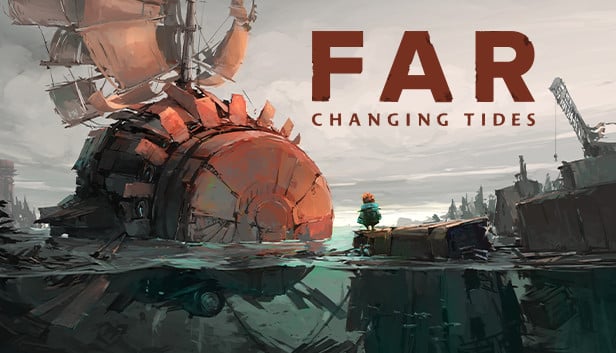There is something about the open seas that invites ideas of adventure and mystery. I don’t know if it’s the horizon calling out or not. But I do know that we are compelled to seek it out. That’s what I’m constantly thinking of when I am playing FAR Changing Tides.
FAR: Changing Tides is a 2.5D puzzle platformer where the player captains a mysterious sea-faring vessel towards parts unknown. They do this by clearing puzzles in order for their ship to advance its journey. The game is a continuation of the story started in FAR: Lone Sails. Similar to the previous game, our character wakes up in a strange world. Though the difference this time around is that everything familiar is now submerged underwater. Seeing the world the way it is, Toe embarks on a voyage to find a new home.
There is nothing truly remarkable with the puzzle platforming elements of the game. You are always either moving stuff into place or finding ways to upgrade your ship to move past obstacles. However, the execution of the puzzles, simple as it may be, often leaves you with a sense of awe that you wouldn’t expect with a game like this. An example of this is the wind puzzles where you must find ways to not get pushed back.
Outside of the puzzle locations, the player is able to explore the depths close to the vessel using a diving suit Toe found while walking through some ruins. The suit allows the boy to stay underwater almost indefinitely and mobility that rivals that of dolphins. It comes in very handy especially when the player is underwater and there is salvage that can be brought up to fuel the vessel.

Maintaining forward momentum is what this game is all about. The player can bring up the mast and unfurl the sails to harness the power of the wind. Constantly adjusting to the angle of the sails quickly became my favorite pass time. Unfortunately, therein lies the problem with any ship that relies on sails. The sheer size of the sails makes them prone to collisions. And it is impossible to use them during thunderstorms.
This is where the engine comes in handy. They provide the kick that is needed to power through obstacles normally impossible for regular ships. But it has a tendency of burning through resources quickly. In times like this, the game becomes a little stressful. Finding resources can become tricky. There are buoys that have guaranteed scrap underneath them, but other than that, there’s no telling when your next resupply is going to be. This is why I tend to use sails as often as possible. Looking back, I suppose if I was better at keeping systems balanced, I may be able to use the engine for longer.
Making matters more complicated is the fact that the vessel has underwater functionality. The player not only has to worry about the engine but tending to the ship’s buoyancy as well. But the view is very nice, especially when jellyfish and whales move alongside the vessel in the background.
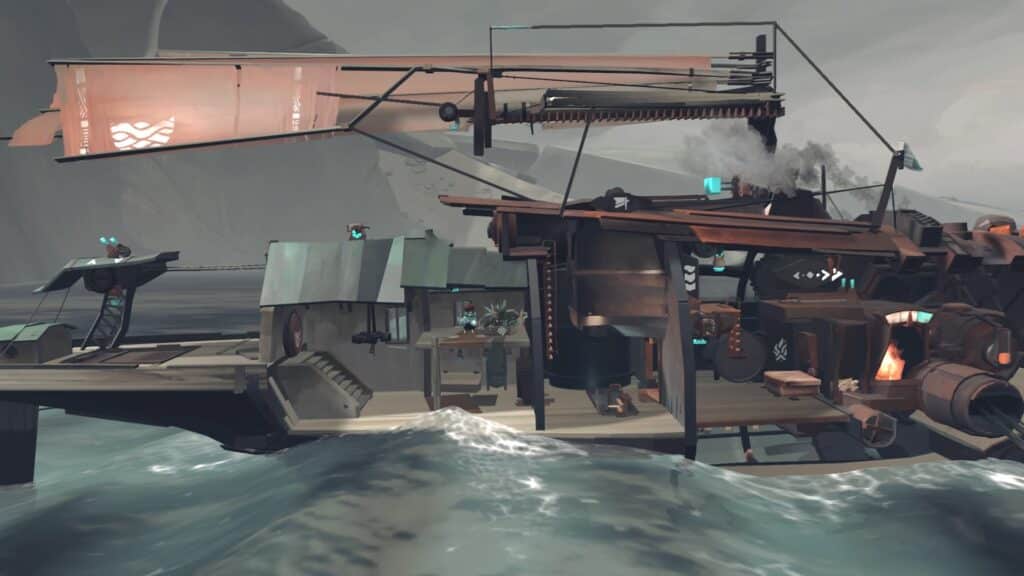
The overarching objective of the game is never made clear. All we know, as the player, is that we need to push forwards towards the unknown. What little information we get about the game’s story is scattered throughout various locations and is mostly left to the player to figure it all out. But no matter how you feel about the journey throughout, it is the ending that ultimately puts everything into perspective.
Toe’s journey takes us everywhere from forests through the open seas through underwater caverns to what appears to be near the polar ice caps. In all these locations, remnants of an ancient civilization lie hidden under the waves. Only through our passage of them do these ancient constructs come to life once more. Oftentimes, it is the empty halls and lived-in buildings that make us feel the loneliest.
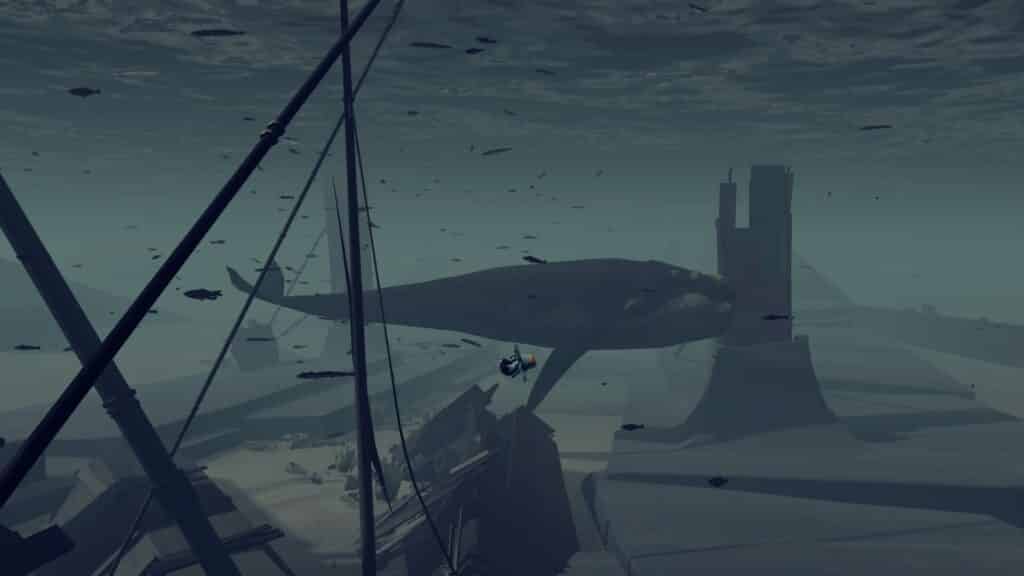
The game’s simple presentation serves to not only keep the focus on the journey itself but to enhance the vessel’s surroundings. I couldn’t count the number of times I just looked in the background as deer ran free in the woods or the school of fish that constantly circle around. Even the waves that gently hit the vessel draw more attention than they should have. And all of this is happening with the occasional dose of instrumentals playing in the background. Because as always, when the music starts up, something is bound to happen.
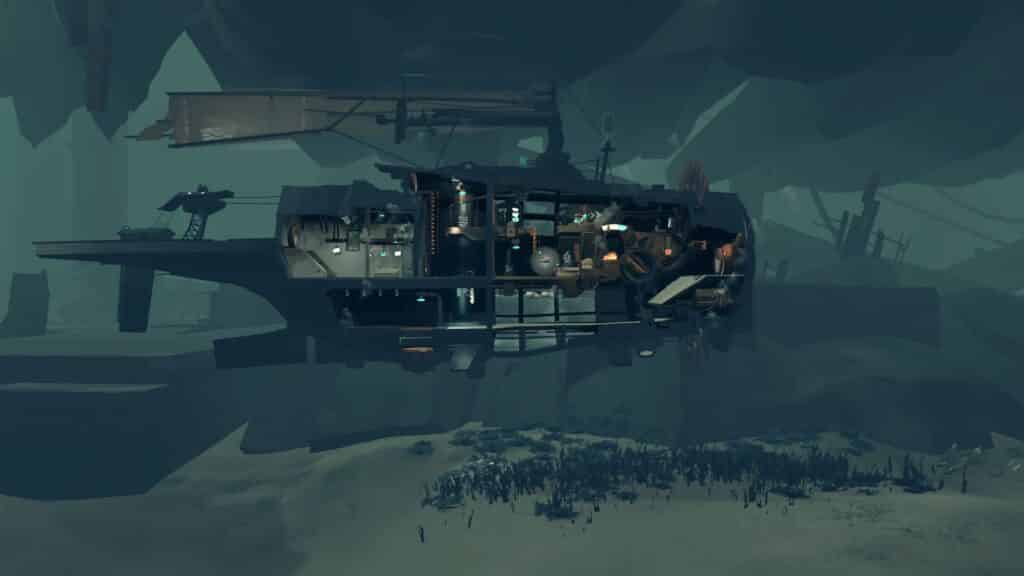
I can go on and on about how this instills a sense of adventure and longing but I cannot ignore some of its shortcomings as well. As much as I love the “journeying” part of the adventure, I’m afraid there one too many stretches where nothing is going on. This is further enhanced by the fact that looking for salvage is a major drag. I’m almost afraid to let the engine run for any longer than necessary because I’ll never know when I really need to use to get out of a tight spot.
Solving some of the puzzles isn’t as clear as I would have liked. There are times when I got stuck for extended periods of time because I thought the way of solving this particular part needed more. Turns out I was just over-complicating it and the solution was staring at me the whole time. I guess when your options are to jump from side to side and interacting with objects, there really isn’t much to think about – unless you overthink it.
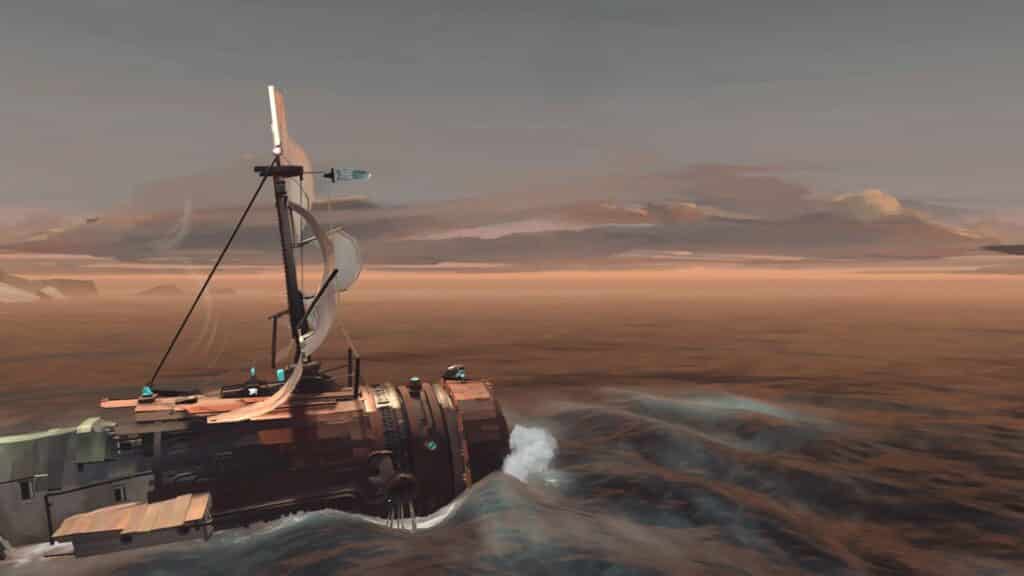
FAR: Changing Tides is more concerned with showing a story rather than actually telling one, and it absolutely works out in its favor. Yet again, the series manages to tell an entire story without a single line of dialog. There aren’t many thrilling moments throughout the journey, but the ones we do have are some of the most eye-opening ones that I couldn’t even imagine being possible, even in the last game. There are very few games that allow you to look inward the way the FAR series does. If you’ve played and enjoyed the first game, you owe it yourself to have this game be part of your collection.



